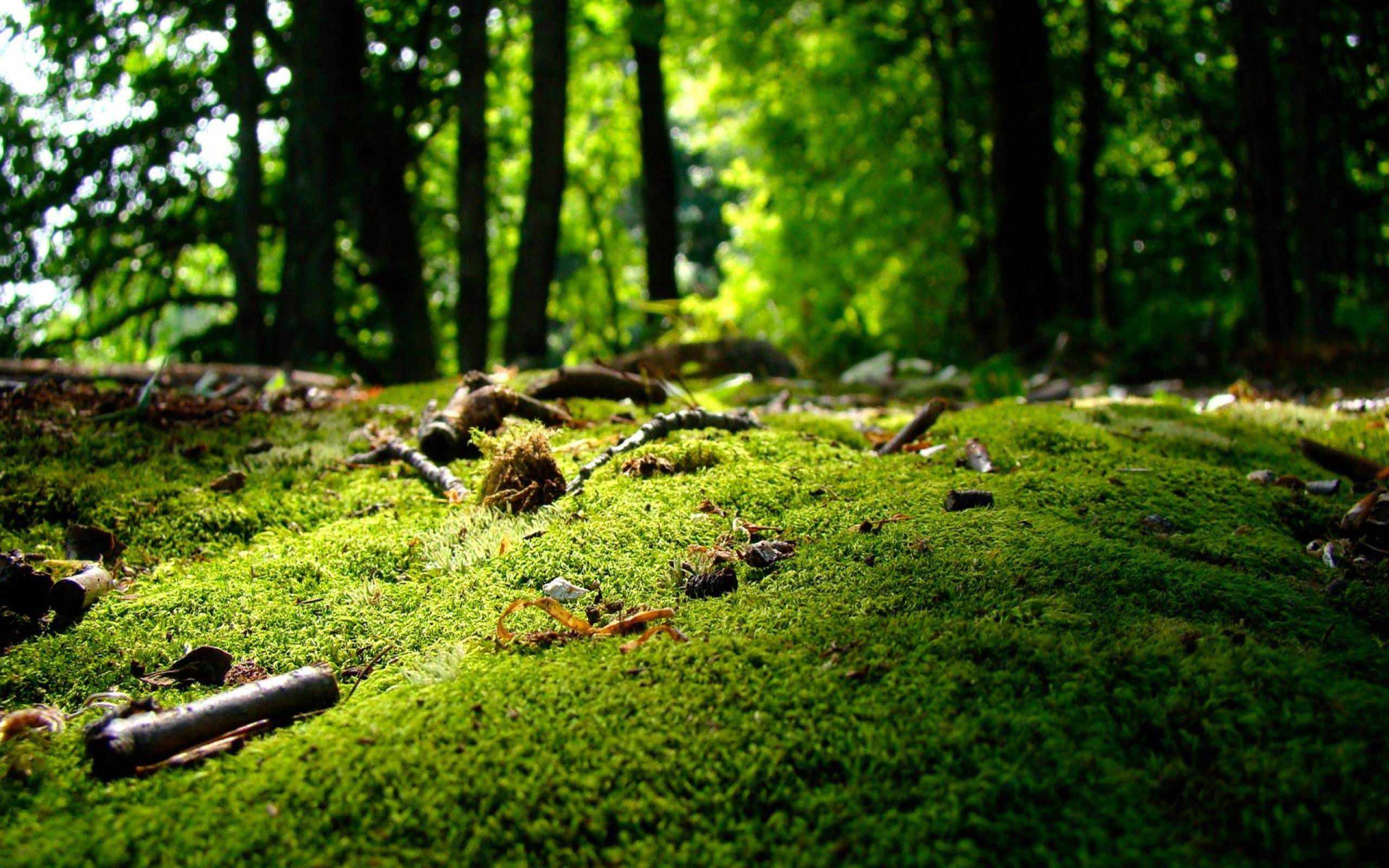Author:
Green Steps
Short summary:
On Thursday morning, we were at the Otto Glöckel Elementary School and met with Annelies, a recreational educator associated with us, and the children from the municipal vacation care program to move the bricks supplied by Hornbach from the running track to the meadow. In the process, we were able to make an interesting pedagogical observation. And there was a quasi-vegan raffle.

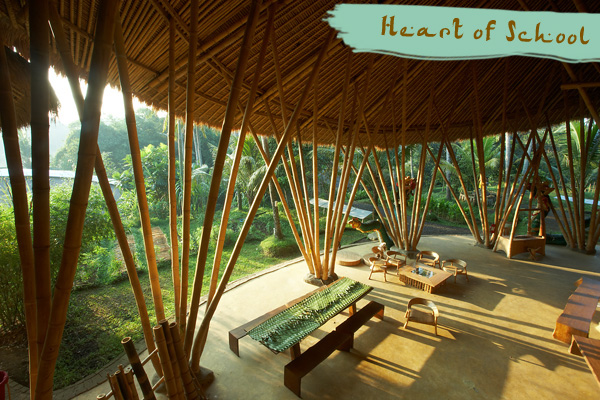
Since my visit to the Green School in Bali in 2017, I have been wondering how to improve children's connection to nature on school campuses. The Green School was one of many kindergarten and school projects I have intentionally visited since 2010 to understand what a school that holistically integrates nature connection into the curriculum might look like.
I was deeply inspired by both the architectural aesthetics of the building and the concept of each class caring for a small garden just outside the classroom. But even during the guided tour, I wondered how such a concept could be translated to temperate climates, where both the building structure must be different and the temperature is not the same 365 days a year.
Another point that made me tick off the Green School Bali project was the school fees, which are only affordable for very wealthy families. Thus, the Green School project violates one of the most fundamental principles of education: equitable access. Green education for the top ten thousand is not objectionable, but it remains a luxury product that, like elite universities, remains out of reach for the majority of the population, and therefore cannot be scaled.
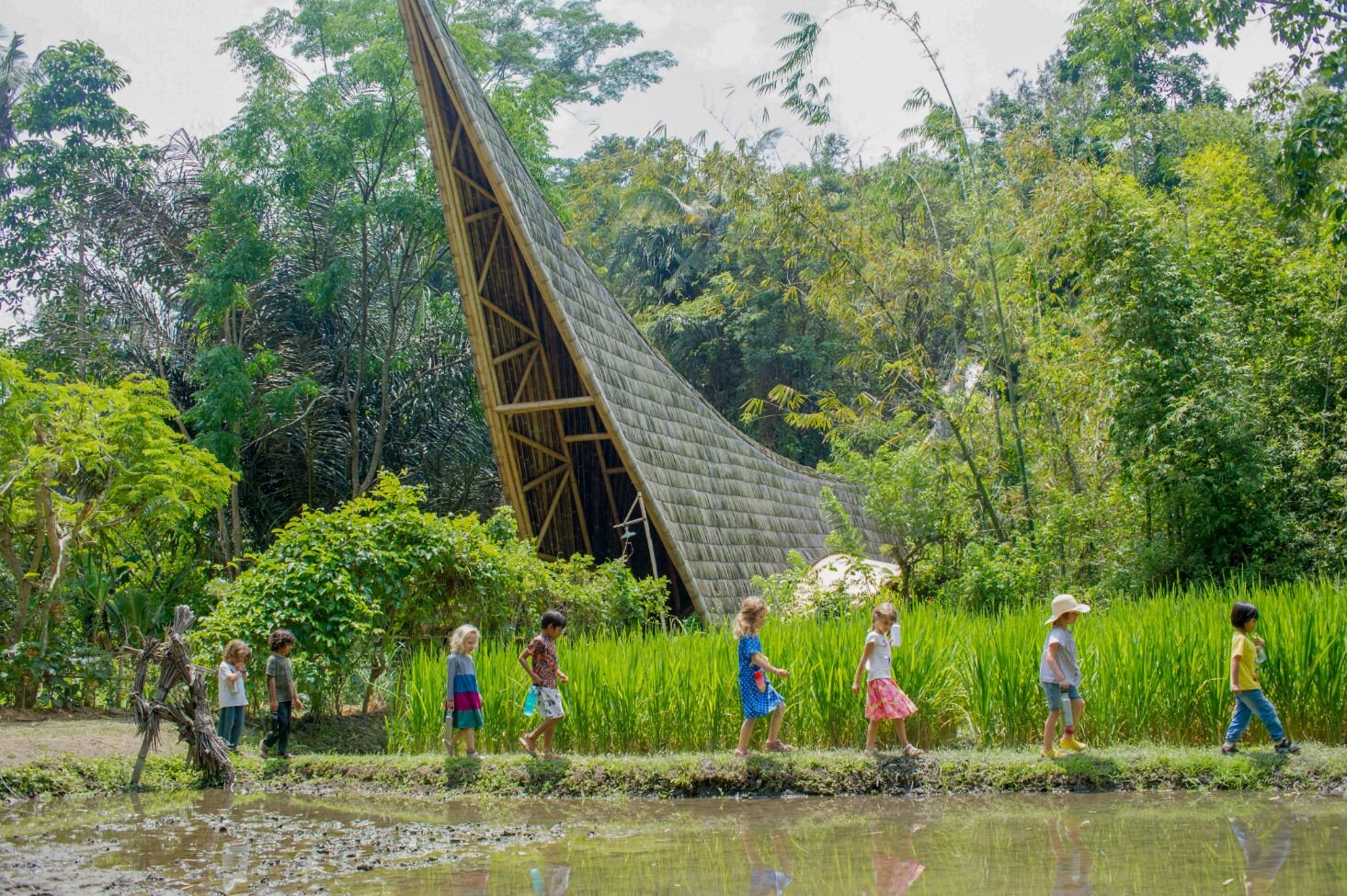
Exciting environmental education for all. Architectural aesthetics in every public school. Can this exist? If you look at the changes in the educational landscape in Austria, which in itself ranks in the global educational luxury segment, then realistically you have to start doubting. Private schools are multiplying like bacteria and mostly "native" families are trying to place their offspring there to protect them from the decay of the public education system. Public schools are often provided for only at the minimum level by municipal school custodians and are often in a deplorable condition.
In particular, the outdoor spaces of many public schools resemble the courtyards of prison facilities. A short mowed soccer field. Too little seating to even read a story together with the children outdoors. All in all, it's a dreary picture that doesn't invite you to go outside, but instead makes you more tempted to reach for your cell phone during recess.

In the Otto Glöckel Elementary School, we have found a school principal who is eager to experiment and who has now been supporting us for some time in integrating new formats of environmental education. We go litter picking with the kids and explore the urban ecosystem on bioregional walking routes. Just before summer, we implemented two new projects in the school garden: A scavenger hunt that introduces the children to the tree species on the school grounds through play, and a 9m2 vegetable patch that will be followed by two to three more.
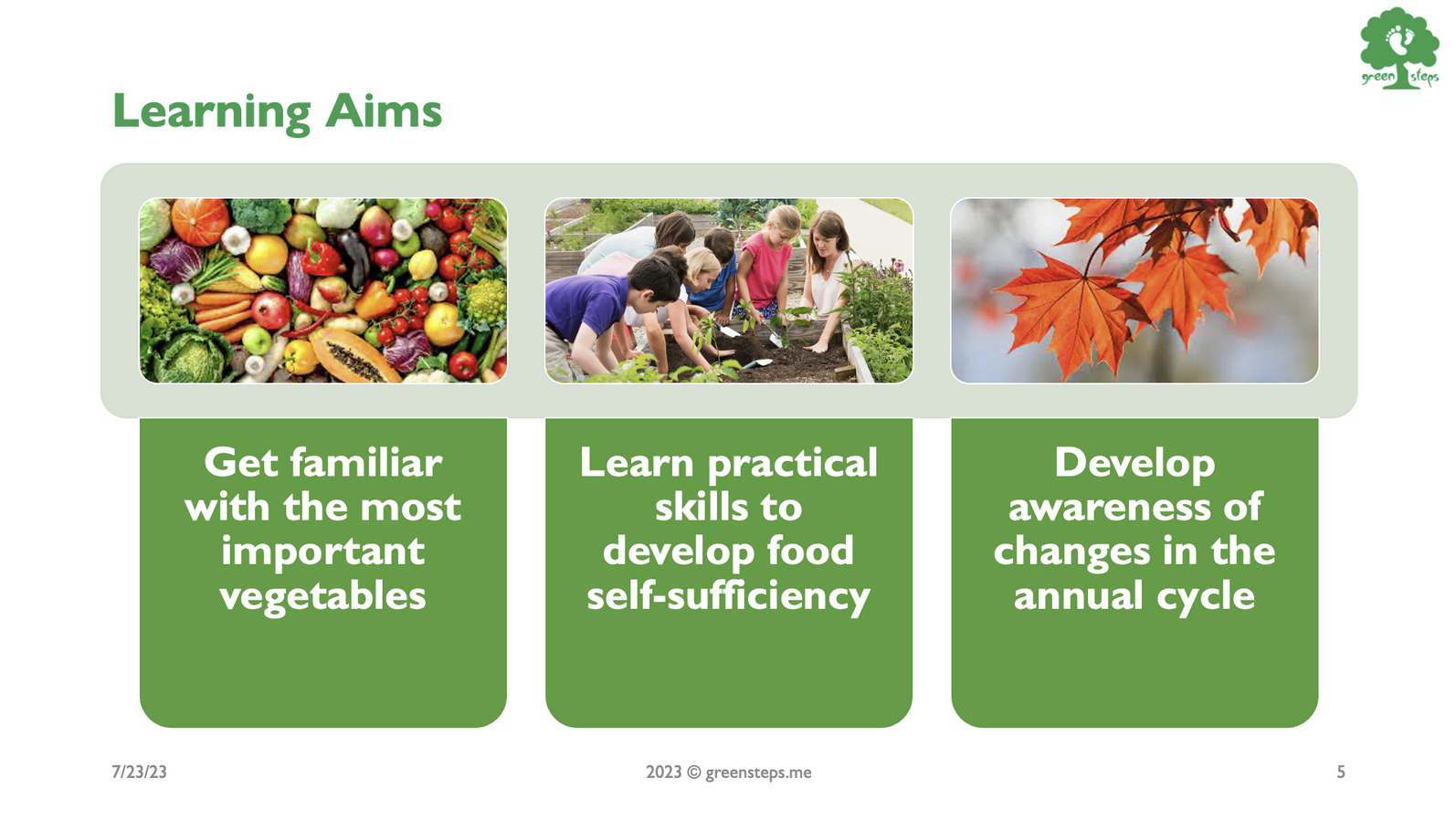
The vegetable patch format at Green Steps is called Groovy Garden. The idea is to have a class take responsibility for a clearly defined area and observe a few vegetable varieties in the annual cycle. The premise here, unlike Green School, is to implement this project at the lowest possible cost. After 3m3 of compost was supplied free of charge by a local company, the actual costs were largely limited to a pallet of perforated bricks that I had ordered from Hornbach for three vegetable beds.
Before school started, it was therefore our task to remove the pallet from the runway where it had been temporarily stored. Annelies, the recreation teacher, had agreed to lend a hand together with the children and move the more than 200 bricks. In return, we would hold a raffle of the already ripe vegetables with the children. Quasi a vegan raffle.
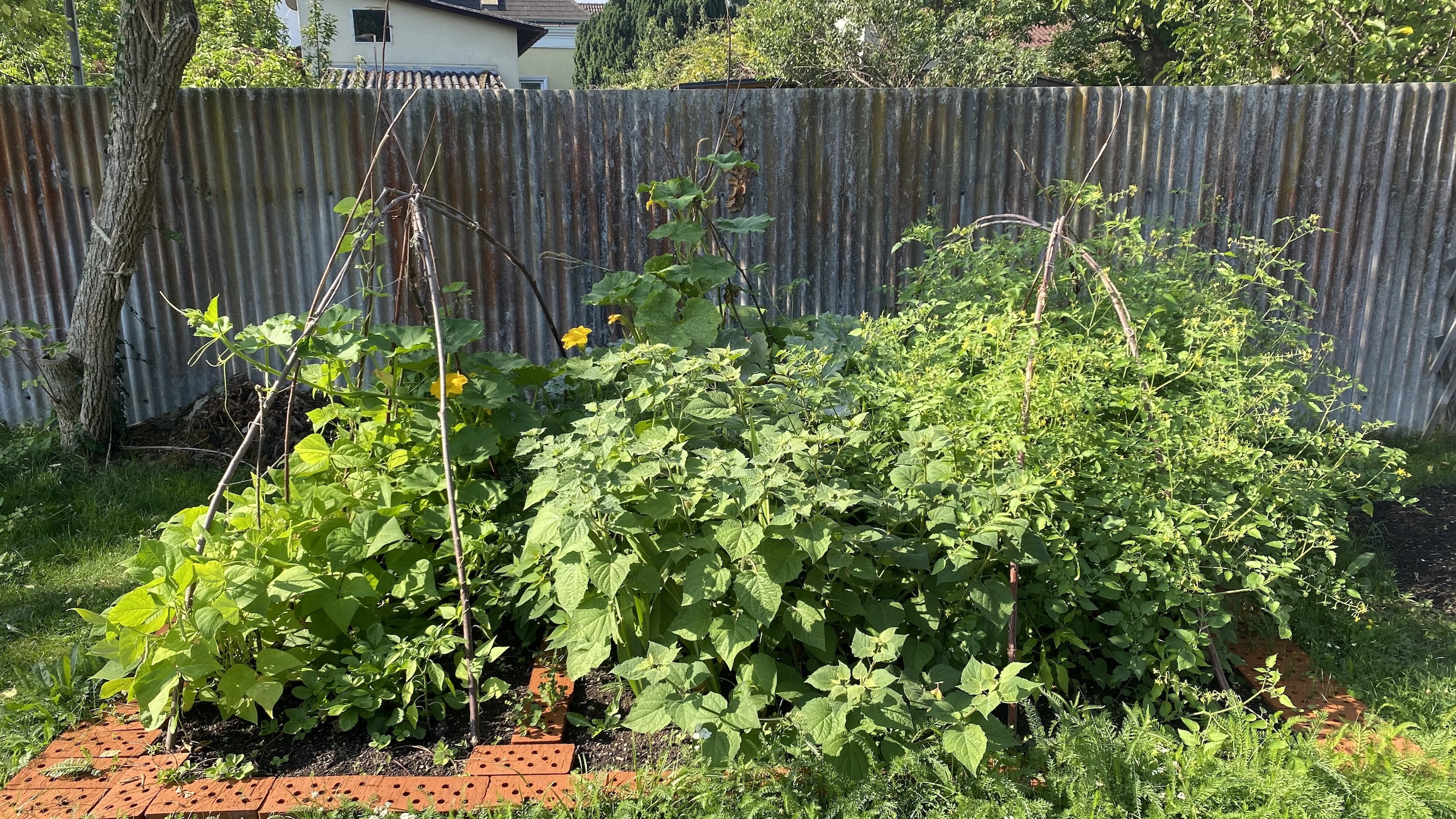
Inspired by ant trails, I thought it would be fun for the kids to recreate an ant trail by making a line from place A to B and passing the bricks one by one. Annelies christened this plan "Many hands quick end" and after a brief explanation we were off to work in line. This went well for a few minutes, but by then I heard two girls to my right commenting on the action, "This must be how they built the pyramids. Only with much bigger stones." The children were comparing themselves to work slaves. I would not have thought that with the best will in the world.
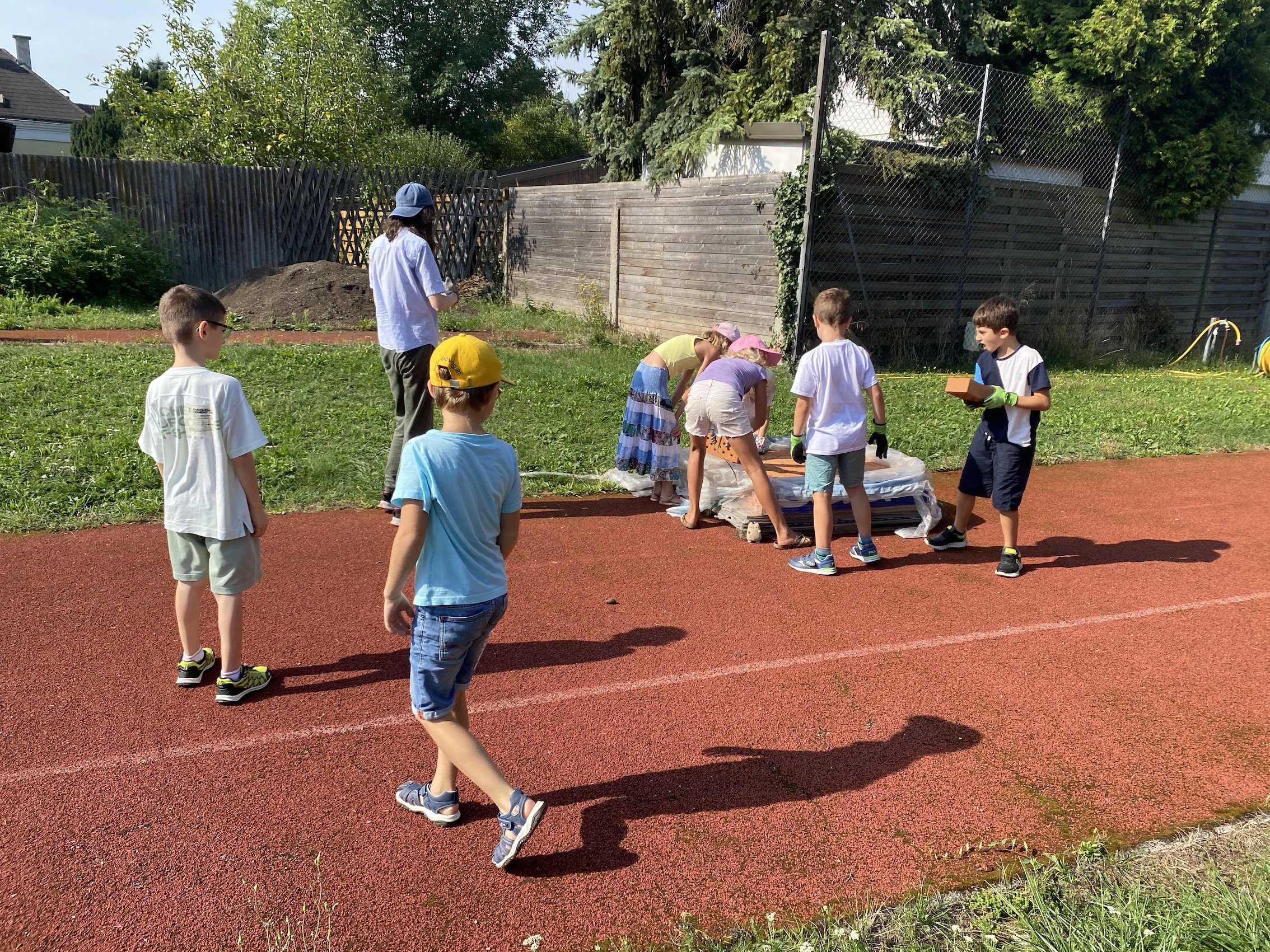
We dismissed the children for a drink break and continued independently. After a few minutes, the first ones came back and started to help us "without instruction". Not all of them came back, but those who did were visibly enjoying themselves more. I took a step back and realized that the first arrangement, similar to an assembly line, had the children perform only one specific movement, while the second arrangement allowed for complex movement sequences and gave each child a great deal of autonomy and a direct sense of accomplishment: carrying one or even two bricks from point A to point B. A textbook example of autonomous learning.

The task was now quickly completed. We had a little less hands, but joyful and dedicated work. Therefore, we began with the raffle and raffled the late summer harvest among the children present. Annelies had prepared this very well and so the lucky winners went home with zucchini, pumpkin, beans and tomatoes.

The instructions for the Groovy Garden course are available for free reference in the Green Steps ARK Best Practice Library for interested teachers and parents. To get the project up and running in your school with minimal resources, feel free to contact us as well.
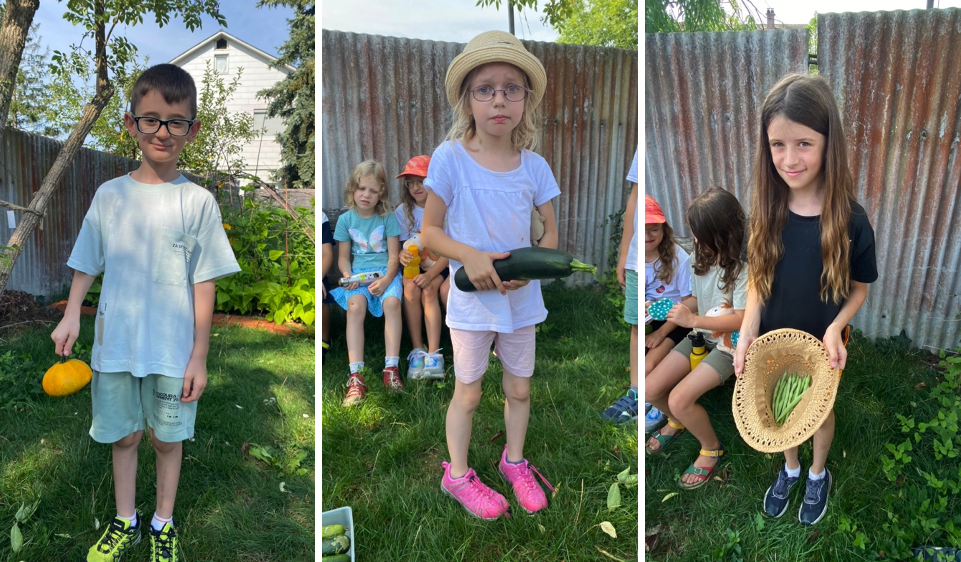
Further information:
• https://www.greenschool.org/
• John Hardy: My green school dream
• His daughter, Elora Hardy: Magical houses, made of bamboo
• Groovy Garden manual for teachers and parents




